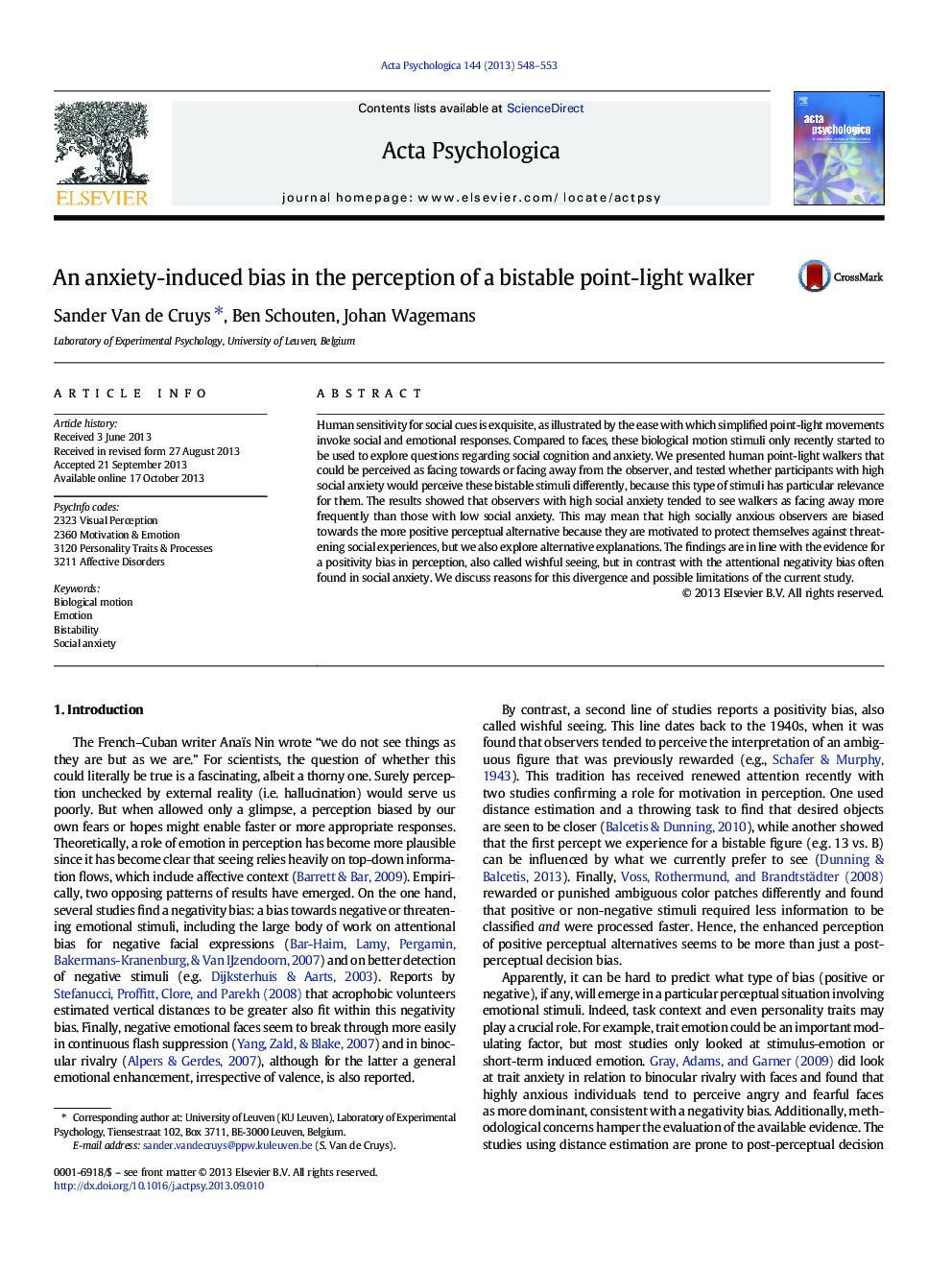| Article ID | Journal | Published Year | Pages | File Type |
|---|---|---|---|---|
| 10453806 | Acta Psychologica | 2013 | 6 Pages |
Abstract
Human sensitivity for social cues is exquisite, as illustrated by the ease with which simplified point-light movements invoke social and emotional responses. Compared to faces, these biological motion stimuli only recently started to be used to explore questions regarding social cognition and anxiety. We presented human point-light walkers that could be perceived as facing towards or facing away from the observer, and tested whether participants with high social anxiety would perceive these bistable stimuli differently, because this type of stimuli has particular relevance for them. The results showed that observers with high social anxiety tended to see walkers as facing away more frequently than those with low social anxiety. This may mean that high socially anxious observers are biased towards the more positive perceptual alternative because they are motivated to protect themselves against threatening social experiences, but we also explore alternative explanations. The findings are in line with the evidence for a positivity bias in perception, also called wishful seeing, but in contrast with the attentional negativity bias often found in social anxiety. We discuss reasons for this divergence and possible limitations of the current study.
Keywords
Related Topics
Life Sciences
Neuroscience
Cognitive Neuroscience
Authors
Sander Van de Cruys, Ben Schouten, Johan Wagemans,
